It's a little known fact, even among hardcore Doctor Who fans, that the Tardis console - the bit in the middle that goes up and down - makes one hell of a squeak.
During the course of filming four series at the BBC's Cardiff studios, the light inside the tube melted the plastic, expanding it, so when it moves it sounds like a rusty bicycle pump and tends to obscure any dialogue during the interior Tardis scenes.
This is where supervising sound editor Paul McFadden and his team at Bang Post-Production step in. McFadden will add any additional dialogue recordings (ADR) that the squeaks have obscured, as well as ensuring the scenes inside the Tardis are filtered with a cavernous reverb - so they don't sound as though they were filmed in a studio. It's often the subtler, corrective jobs that call on the skills of a sound designer. The dialogue, location sound, spot effects (such as doors opening and closing) sound effects and the soundtrack must all be sourced and balanced by the sound team.
“It's making sure you tell the story through sounds and knowing what to use when,” says McFadden. “Sometimes you lay on the effects, at other times the music does the job. And for an emotional moment on a beach between two characters it might be enough just to hear sea wash in the background,” he explains.
Monster's roar
Creating and retaining this balance in TV drama can also be much more of a challenge than in cinema for both technical and financial reasons. Most viewers do not yet have surround sound in their living rooms and in any case Ofcom regulations stipulate that sound levels in shows should not register higher than six on the Peak Reading Meter (an audio device that regulates sound levels).
“You can't have loud music playing at the same time as a monster roars, or the sound of a car engine during a big action sequence - it would be overkill,” says Dean Humphreys, sound supervisor and co-owner of Twickenham-based audio outfit Crossfade, which is working on the third series of ITV1 dino-drama Primeval.
Another limitation of TV is that because of the extra budget that additional dialogue recording would require, or because the director prefers the on-set performances, dialogue is not always re-recorded.
“TV drama can be a struggle because the location recording may have taken place in a noisy environment, so you can't necessarily add subtle background effects in post because you would have to re-record the dialogue,” explains The Farm head of audio Nigel Edwards.
These days, thanks to eight-track hard disk recorders and personal mics, there are few sounds that a sound recordist working on a drama cannot pick up on set.
According to BBC Resources dubbing mixer Steve Hudson, this is both a blessing and a curse as decision-making gets pushed further down the process.
“You might have two characters being filmed walking down a street and talking into two personal mics, a boom (containing the hard disk recorder) and a camera mic. So as well as eight tracks from the hard disk recorder there will be the three other tracks to go through. This might leave eight hours of sound which can be very time-consuming to trawl through and I still have to hang on to all the other sounds because the director might decide he prefers the sound recording on the personal mic track to that picked up by the boom,” Hudson says.
Getting the right balance between gathering as many sounds as they can for editors and handing over too much is another challenge, according to location recordist Mark Roberts, a natural history specialist. So, one of the first things he makes use of before each recording are his ears.
“I just walk around and listen. It could be the birds calling or sounds of the river and the trees. That way you can isolate ambient sounds and make recordings from different perspectives,” he says.
Recording and selecting the right wild tracks (sound-only recordings taken on location) can, however, add a rich layer of activity to a drama if directors know what they want from their sound design.
On BBC1's recent five-part drama Criminal Justice, the opening sequence of one episode took place in a prison and the director needed to convey the idea that there were more prisoners than there were extras on the set.
The solution was for BBC Resources sound designer Kian Wong to create an off-camera narrative using bits and pieces of background dialogue recorded on location. He explains: “So you overhear a prison guard calling: ‘Next one, please', ‘this is your bag, this is your cell' and prisoners listening to music and being a bit rowdy to give the idea of the procedure of checking in to prison.”
Sense of mystery
At other times, deciding not to add any sound at all can be just, if not more, effective than adding 300 tracks to something, according to The Farm's Edwards. He uses an episode of Buffy the Vampire Slayer in which her mum dies as a case in point.
“As soon as Buffy finds her mum unconscious on the sofa there is no sound design at all - the car on the way to the hospital makes no noise and there is no atmosphere track in the hospital. The total effect was a feeling of numbness, which was hugely effective,” he says.
Factual shows, particularly those containing voice-overs and reconstructions, also challenge the sound team, as Paul Langwade, a dubbing mixer at post house Breathe, discovered during the post on Five's forthcoming documentary series about UFO sightings. While Britain's Closest Encounters is factual, Langwade's brief was to create scenes with mystery to them through use of sound.
“One scene involves police standing on a hillside as some strange lights make their way over the horizon. Automatically you get an idea of how this might start to sound but then comes the witnesses' voice-over, which says: ‘... and one thing that really struck me was how absolutely silent everything was... ' So we ended up having to go with something much more lo-fi and subtle because in that case it was the dialogue that added most to the story.”
On reconstructions, budgets can also be limited and recordists do not have the luxury of going to a sound stage. They may also feel that the result from a studio would not sound authentic. Roberts prefers to improvise with sounds on location. During a recent shoot for a Tigress Productions Nature Shock doc about a whale that exploded in the street, this meant him running up and down the streets of Taiwan, throwing blubber and watermelon at shop windows to recreate the sound of the whale exploding.
Other projects, however, require entire environments to be built from scratch, with the effects added in post. Matt Faulkner, a dubbing mixer at Rainbow Post in Soho, has become something of a specialist in recreating sounds heard by a foetus inside the womb. His work includes the sound design on Channel 4's In the Womb and BBC4's forthcoming series Growing Babies, both co-productions with National Geographic.
Faulkner's job in both cases was to take hours of mute footage and work out a soundscape before painstakingly track laying the whole film scene by scene.
He says: “While it's all subjective you still need to convey the idea and represent something which is occurring. So you're hearing bodily noises from an internal perspective, which are mixed in and enhanced. Once the baby's senses start to develop, you can start to hear sounds outside the womb from the baby's point of view such as cars going by or music which the mother is listening to.”
Conveying speed
Creating sounds from scratch to accompany CGI also presents a challenge for sound designers working on character animation, who often rely on still frames, sketches and dialogue to conceive sounds.
Alan Coates - a member of The Hollies during the band's 1980s incarnation - takes a composition-based view of sound design at his audio post outfit, The Voice and Music Company, which has worked on Horrid Henry, Fifi and the Flowertots and Rory the Racing Car.
“We believe that music should blend in rather than fight with the sound design. On Rory, for example, to convey speed we might use a mix of real engine noises and guitar-based rock music imitating a fast engine,” he says.
Coates' colleague, sound designer Tom Livsey will then ramp things up in the mix. “Animation tends to sound OTT and larger-than-life so you are exaggerating a lot of the effects,” he explains.
Doctor Who series 4, BBC1/Bang Post-Production
According to supervising sound editor Paul McFadden at Bang in Cardiff there are some iconic sounds that you just don't mess with on Doctor Who.
The Tardis landing (created by rubbing material against a piano string) and the sonic screwdriver (produced by the BBC's Radiophonic Workshop during the Peter Davidson era) have both been sampled on a keyboard for use in the new show.
While the fourth series has involved McFadden creating rock monsters in Pompeii and child-like mounds of fat called The Adipose, his biggest challenge has been dealing with human sounds.
In Midnight, Lesley Sharp plays Sky Silvestry, a character on a tourist vessel who becomes possessed, repeating everything that the other passengers say, then starting to talk in synch with them. She finally turns the tables on the Doctor, with him finishing her sentences.
The synching of the dialogue lasts for a total of 20 minutes in the show and after a meeting with the writer, producer and director it was agreed that everyone should do their lines clean. “During filming the characters were shot from lots of different angles and afterwards we used a technique called “Chinese-ing” where you fit the dialogue from another take into the lips of a wide shot which shows the front of one character and the back of another,” McFadden explains.
To get the synchronisation spot-on, Sharp spent another day doing ADR where around 50% of the dialogue was redone in post.
“Every word had to be chopped up and redone because the rhythm was different - technically it's a really complicated thing to do,” adds McFadden.
Primeval series 3, ITV1/Crossfade
Primeval executive producer Tim Haines has been working with dinosaurs since his breakthrough 1999 series Walking with... but turning his hand to use them in drama for ITV's Primeval has been challenging because the CG dinosaurs have to fulfil a much more dramatic role.
“Because it's a drama it's much busier - and the viewer has to understand what is going on. You end up having to throw stuff out to make things work,” he adds.
Sound supervisor Dean Humphreys at audio boutique Crossfade adds: “The trick is to balance everything and prioritise the scene. If you have a big action sequence you might want to reduce the sound effects. For a growling monster you might want to drop the music; to demonstrate the impact of the crash you might need to turn down the music. With TV there's no point in trying to squeeze everything in at once.”
According to Humphreys, one of the main tasks was for the dinosaurs to possess a human element. “You think of a dinosaur roaring but in a drama they need other nuances so that they can also sound quizzical and confused. Those are the hard bits.”
How the creatures sound may be dictated by the animal they resemble. “Some are bird-like, others may contain elements of pigs screeching - the final mix is a pot pourri,” says Humphreys.


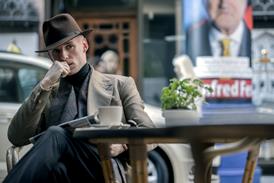




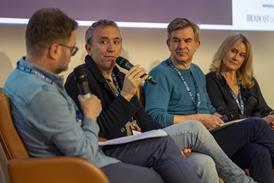
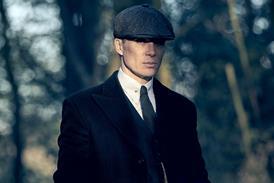
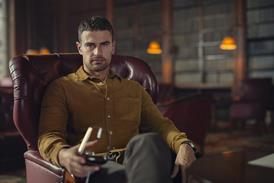

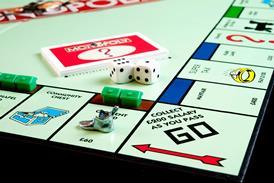
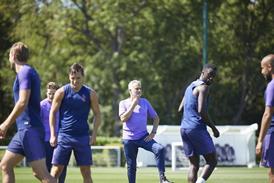

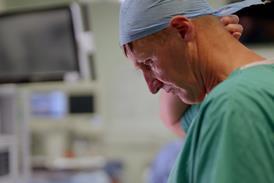

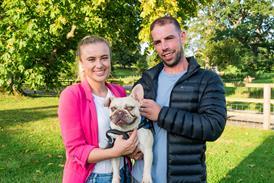












No comments yet